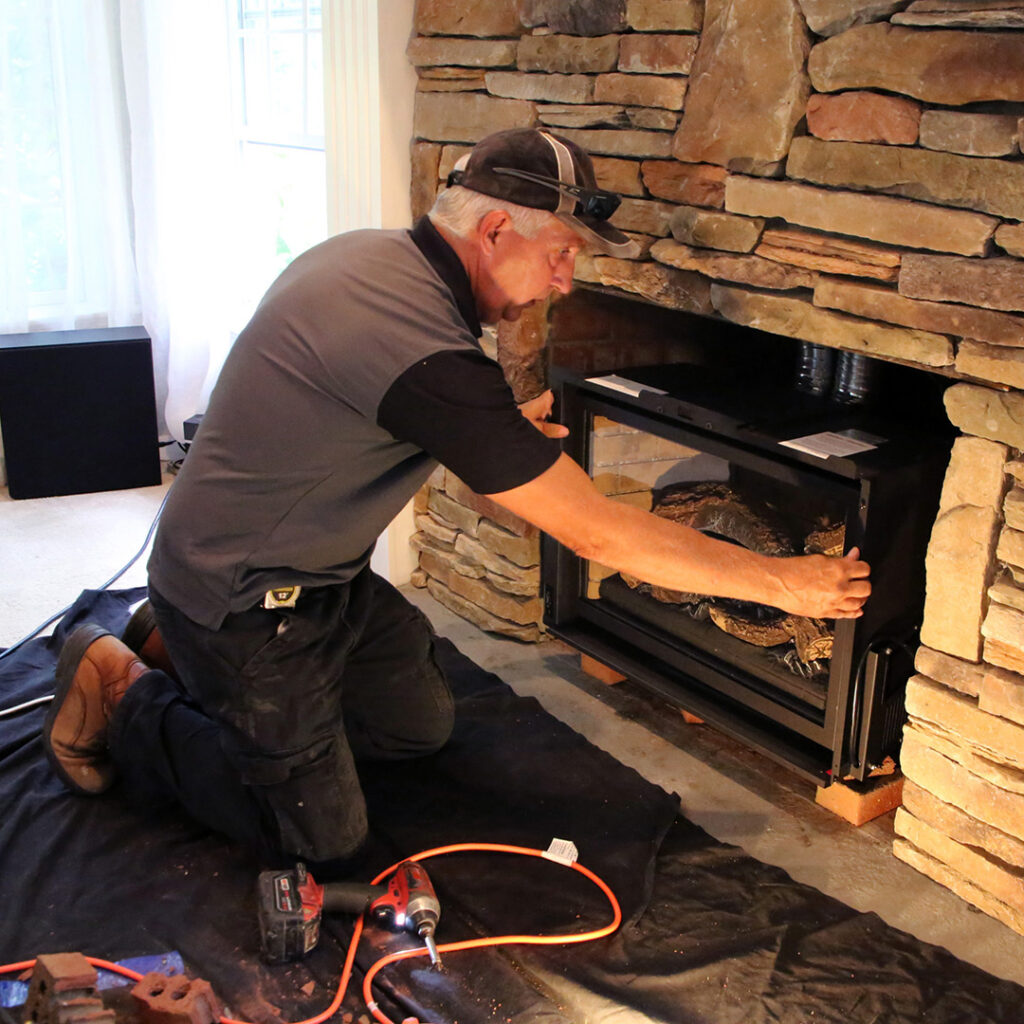Convert Your Wood Fireplace to Gas
Are you one of those who love your fireplace for the ambiance, charm, and nostalgia it gives but don’t like how labor-intensive or inefficient it is? If so, this blog post is for you. We’ll dive into how to convert your fireplace to gas and weigh the pros and cons.
 Why Convert to Gas?
Why Convert to Gas?
There’s nothing that beats a roaring fire on a cold winter evening, but traditional fireplaces are a chore to maintain, and they’re terribly inefficient as a heating source. How inefficient, you may ask? Traditional wood-burning fireplaces lose up to 80% of their heat up the chimney. That’s why many fireplace owners have to rely on furnaces and heaters to get their homes warm enough.
Another reason to convert to gas is how much more convenient a gas fireplace is to use than a wood-burning one. Gas fireplaces are incredibly easy to use. Flip a switch or push a button on the remote, and you’re enjoying a warm, inviting fire—no hauling wood, cleaning ashes, or tending the flames.
Lastly, gas fireplaces produce fewer emissions and don’t generate ash, soot, and creosote, making them safer and less of a chore to manage.
Gas Fireplace Considerations
Okay, so you’re intrigued about switching to gas, but we’re not ready to go to the store just yet. There are other things to think about before taking the plunge.
Three main types of gas fireplace options are good for conversions:
Gas Inserts
Gas inserts are self-contained units that you install into your existing fireplace. They’re a popular choice because of their efficiency, easy operation, and easy installation.
Gas Logs
If you want to preserve the look of a traditional fireplace, gas logs are the way to go. Ceramic or refractory logs look like real wood and can either be vented (requiring a chimney) or ventless, which is subject to local building codes.
Gas Fireplace Conversions
This option uses the existing fireplace structure but replaces the wood-burning system with a gas-burning one. Like gas logs, it gives the vibes of having a traditional fireplace but with modern gas advantages.
Now you’re convinced that a gas fireplace is right for you but hold on, we need to look at the drawbacks and why you might want to reconsider.
Drawbacks of Converting to Gas
There are two sides to every story, and converting to gas has its downsides worth considering.
Initial Cost
Converting a wood fireplace to gas can be expensive, especially if your home doesn’t already have gas lines. Gas conversions are also expensive. Typical prices range from $2,000 to $5,000, not including installation costs.
Not Authentic
If you’re a purist, a gas fireplace will never have the same effect as a “real” fireplace. There’ll be no crackling sounds, smoky aromas, or the tactile experience you get from gathering and stacking wood. This is a deal-breaker for many people.
Gas Dependence
Gas fireplaces rely on a continuous supply of natural gas or propane. This can be inconvenient or costly as gas prices fluctuate or if there’s a supply disruption.
Ventless System Considerations
Ventless gas fireplaces are efficient and safe, but they do release a tiny amount of combustion byproducts into the house. As such, some people notice a faint gas odor when using these systems.
Maintenance Needs
True, gas fireplaces require less maintenance than wood-burning ones, but they’re not set-and-forget systems. They still need occasional inspections and servicing to stay safe.
 Is Converting to a Gas Fireplace Right For You?
Is Converting to a Gas Fireplace Right For You?
Converting a wood fireplace to gas will give you a much more efficient and convenient heating system. However, if you value a traditional wood-burning fireplace and all that goes with it, or if you’re on a limited budget, it might not be for you.
If you’re still intrigued about converting your wood fireplace to gas and have more questions or concerns, contact us at Northeastern Chimney. We’re the best source for chimneys, fireplaces, and stoves in Central Connecticut.
The post Convert Your Wood Fireplace to Gas appeared first on .
This post first appeared on https://www.mychimney.com